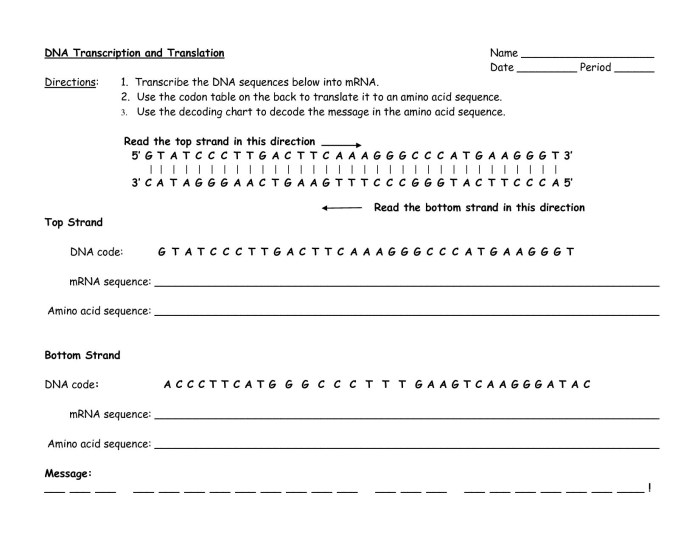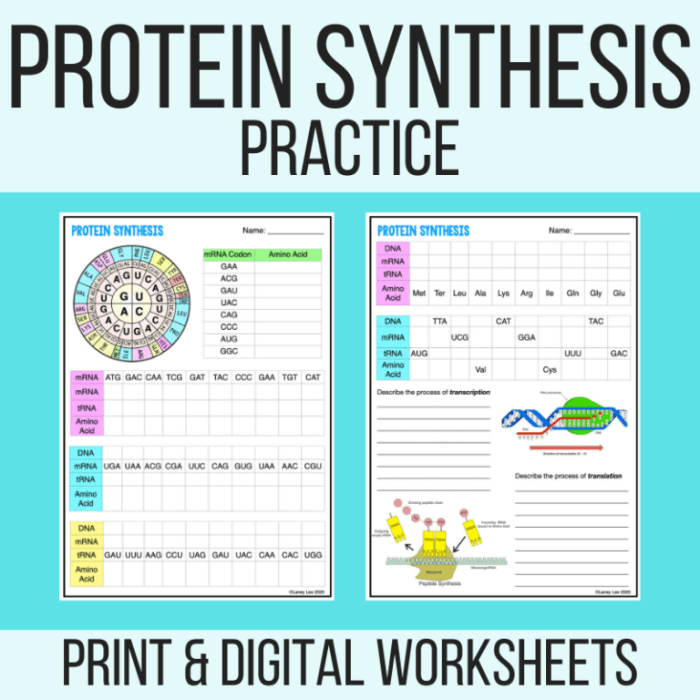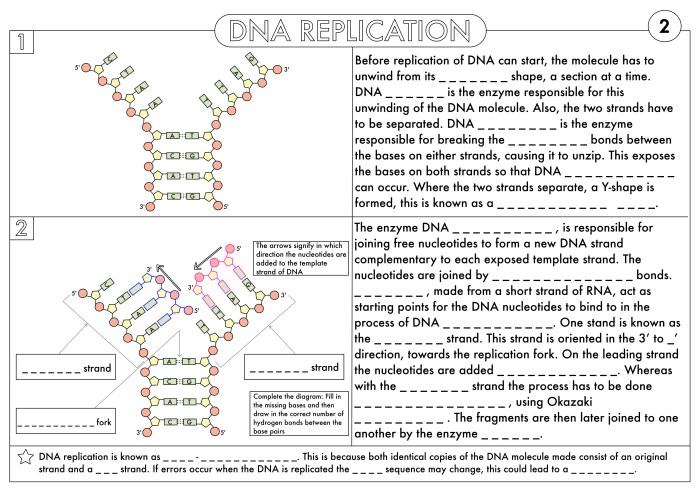Delving into the intricacies of protein synthesis, the review of protein synthesis worksheet embarks on a journey of knowledge, unraveling the complexities of this fundamental biological process with unparalleled clarity and depth.
Protein synthesis, the process by which cells create proteins, is essential for life. A protein synthesis worksheet provides a structured framework for students to engage with this intricate process, fostering a comprehensive understanding of its mechanisms and significance.
Protein Synthesis: Review Of Protein Synthesis Worksheet
Protein synthesis is the process by which cells create proteins, which are essential for a wide range of cellular functions. Understanding protein synthesis is crucial for comprehending fundamental biological processes and genetic mechanisms.
Worksheet Components

Codon Table
A codon table is a chart that lists all possible codons, which are three-nucleotide sequences in mRNA that specify a particular amino acid or a stop signal. The codon table is essential for translating mRNA into a polypeptide chain.
mRNA Sequence
The mRNA sequence is the sequence of codons in a messenger RNA molecule. This sequence determines the order of amino acids in the protein that will be synthesized.
Amino Acid Sequence
The amino acid sequence is the sequence of amino acids in a protein. This sequence determines the structure and function of the protein.
Steps Involved

Transcribing DNA into mRNA
The first step in protein synthesis is to transcribe the DNA sequence into an mRNA molecule. This process is carried out by RNA polymerase, which binds to the DNA template and synthesizes a complementary mRNA molecule.
Translating mRNA into a Polypeptide Chain
The second step in protein synthesis is to translate the mRNA sequence into a polypeptide chain. This process is carried out by ribosomes, which bind to the mRNA molecule and read the codons one by one. Each codon specifies a particular amino acid, which is added to the growing polypeptide chain.
Identifying the Amino Acid Sequence
Once the polypeptide chain is complete, the amino acid sequence can be determined by reading the mRNA sequence from the start codon to the stop codon.
Common Challenges
Understanding the Codon Table
One common challenge students face when completing a protein synthesis worksheet is understanding the codon table. The codon table can be complex, and it can be difficult to remember which codons specify which amino acids.
Identifying the Start and Stop Codons
Another common challenge students face is identifying the start and stop codons. The start codon is the first codon in the mRNA sequence, and it specifies the amino acid that will be at the N-terminus of the protein. The stop codon is the last codon in the mRNA sequence, and it signals the end of protein synthesis.
Translating the mRNA Sequence Correctly
Translating the mRNA sequence correctly is another challenge that students may face. It is important to read the codons in the correct order and to add the correct amino acids to the growing polypeptide chain.
Tips for Success
Practice Using the Codon Table
One of the best ways to improve your ability to complete a protein synthesis worksheet is to practice using the codon table. There are a number of online resources that can help you practice, such as the Codon Table Quiz at the University of Utah.
Understand the Concepts of Transcription and Translation
It is also important to understand the concepts of transcription and translation. Transcription is the process of copying the DNA sequence into an mRNA molecule, and translation is the process of converting the mRNA sequence into a polypeptide chain.
Check Your Work Carefully
Once you have completed a protein synthesis worksheet, it is important to check your work carefully. Make sure that you have read the mRNA sequence correctly, and that you have added the correct amino acids to the growing polypeptide chain.
Benefits of Using a Worksheet

Reinforcing the Understanding of Protein Synthesis
Protein synthesis worksheets can be a helpful way to reinforce your understanding of protein synthesis. By completing a worksheet, you can practice the steps of protein synthesis and identify the different components involved.
Developing Problem-Solving Skills, Review of protein synthesis worksheet
Protein synthesis worksheets can also help you develop your problem-solving skills. By working through the steps of protein synthesis, you can learn to identify and solve problems.
Improving Critical Thinking Abilities
Protein synthesis worksheets can also help you improve your critical thinking abilities. By completing a worksheet, you can learn to analyze information and make decisions.
FAQ Summary
What is the purpose of a protein synthesis worksheet?
A protein synthesis worksheet is designed to guide students through the steps of protein synthesis, reinforcing their understanding of the process and developing their problem-solving and critical thinking skills.
What are the common challenges students face when completing a protein synthesis worksheet?
Common challenges include understanding the codon table, identifying the start and stop codons, and translating the mRNA sequence correctly.
What are some tips for successfully completing a protein synthesis worksheet?
Tips include practicing using the codon table, understanding the concepts of transcription and translation, and checking their work carefully.